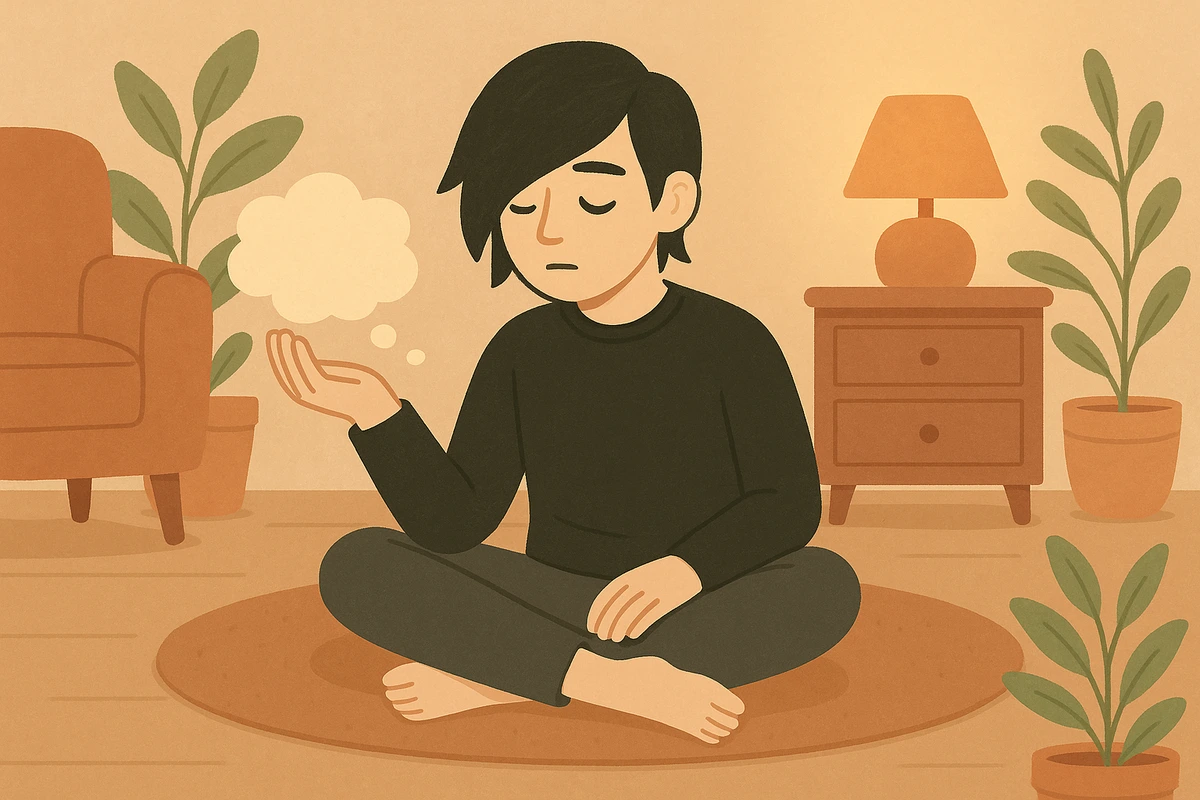Recognizing how your thoughts directly shape your emotions is a foundational skill that transforms how you manage difficult feelings. This process requires 8-15 minutes of focused reflection to examine specific situations and identify the thought patterns that create, intensify, or reduce emotional distress in your daily life.

Your emotions often feel like they come from nowhere, overwhelming you without warning. You might believe that situations directly cause your feelings, but there's actually an invisible step in between. Understanding this hidden connection gives you power over your emotional experiences.
Learning how thoughts influence feelings reveals the bridge between what happens to you and how you feel about it. This cognitive behavioral approach helps you identify and modify thought patterns that create unnecessary emotional distress, giving you tools to foster healthier emotions.
Learning how thoughts influence feelings operates through several interconnected psychological mechanisms that fundamentally improve emotional regulation. The core principle involves what cognitive behavioral researchers call the "cognitive model," which demonstrates that thoughts, feelings, and behaviors influence each other continuously.
The technique leverages what psychologists term "cognitive mediation," which shows that emotional responses are not directly caused by external events. Instead, they're caused by our interpretations and evaluations of those events, which provides a crucial intervention point between triggers and emotional reactions.
One fundamental mechanism involves what researchers call "cognitive restructuring," which is the process of identifying and modifying maladaptive thought patterns. Studies demonstrate that systematic cognitive restructuring leads to significant improvements in mood, anxiety reduction, and overall psychological functioning.
The practice works through what cognitive scientists call "metacognitive awareness," which is the ability to think about thinking. This observational stance creates psychological distance from thoughts, reducing their automatic emotional impact.
Thought-feeling exploration builds what researchers term "cognitive flexibility," which is the capacity to consider multiple perspectives and generate alternative interpretations. Clinical research shows that increased cognitive flexibility correlates strongly with improved emotional resilience.
The framework addresses what cognitive behavioral specialists call "cognitive distortions," which are systematic errors in thinking that maintain psychological distress. Common distortions include catastrophizing, all-or-nothing thinking, and mind reading, which amplify negative emotions beyond what situations actually warrant.
From a neurobiological perspective, cognitive restructuring may facilitate prefrontal cortex regulation of limbic system responses. It engages analytical thinking about emotional experiences rather than experiencing them purely through automatic emotional pathways.
Additionally, understanding thought-feeling connections prevents what psychologists call "emotional reasoning," which is the tendency to believe that feelings reflect reality. This helps people recognize that emotions are influenced by potentially inaccurate or unhelpful interpretations of events.
"I can't identify my specific thoughts during emotional moments" - This is common initially when emotions are intense. Start by examining thoughts after emotions have calmed down, focusing on what you remember thinking. Thought identification skills improve with practice during lower-intensity situations.
"My thoughts seem accurate, not distorted" - Some thoughts may indeed be accurate, but consider whether they're helpful. Ask whether you're focusing exclusively on negative aspects while ignoring positive or neutral information about situations.
"Changing my thoughts doesn't immediately change how I feel" - Emotional changes often lag behind cognitive changes and may be subtle initially. Focus on small improvements rather than expecting dramatic emotional shifts, and remember that practice strengthens the connection.
"I keep forgetting to examine my thoughts during emotional situations" - This is expected during early practice. Set regular reminders to check in with your thinking patterns and practice thought awareness during calm periods.
"Alternative thoughts feel fake or forced" - Start with thoughts that feel somewhat believable rather than completely positive. Aim for more balanced or realistic perspectives rather than overly optimistic ones that feel inauthentic.
"I worry that positive thinking means ignoring real problems" - Cognitive restructuring isn't about positive thinking but about accurate, balanced thinking. The goal is to see situations clearly rather than through the lens of distortions.